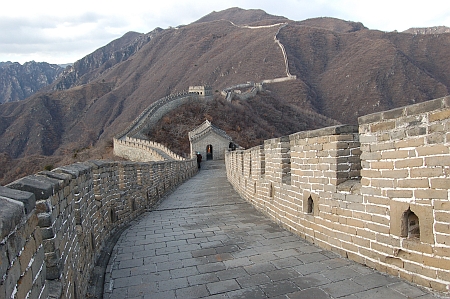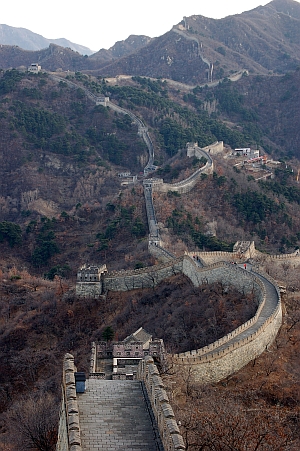Remote Sensing of Cultural Heritage Sites
The Great Wall of China (1/2)
The Great Wall of China, listed as a UNESCO World Heritage Site in 1987, is probably the best known symbol of China. It spans 8,850 km (5,500 miles) from Shanhaiguan in the east to Lop Nur in the west. A recent (2009) archaeological survey found that there were wall sections of 6,259 km, 359 km of trenches, and 2,232 km of natural defensive barriers such as hills and rivers.
The history of the construction of this fortification goes back to as far as the Chunqui period (722-481 B.C.) and the Warring States period (453-221 B.C.) and ends in the 16th century. During all this time, several walls were built, rebuilt and maintained to protect the northern borders of the Chinese Empire from intrusions by the Xiongnu, a nomadic people from the north.
Later, under the Han, Sui, Northern and Jin dynasties different sections of the Great Wall were repaired, rebuilt, or expanded in order to defend the empire against northern invaders such as Mongols, Turks and Tunguz.
It was during the Ming Dynasty (1368-1644) that the concept of the Great Wall was revived again. After a long period of conflict which ended with the expulsion of the Mongols, another 5,650 km of crenellated wall were built.
About 3,000 people worked on the wall during the Qin dynasty.
There is an old Chinese saying "Each stone in the wall represents a life lost in the wall's construction".
This project continued a long time after First Emperor Qin's death. Building the wall was a project that continued for many hundreds of years until the wall was over 6,000 Km long.
Today the Great Wall plays a new role as a symbol of China's rich history. Officials are working to restore the structure, ravaged by time, weather and heavy tourism.
Remote sensing is assisting in the protection, conservation and documentation of this World Heritage Site.


